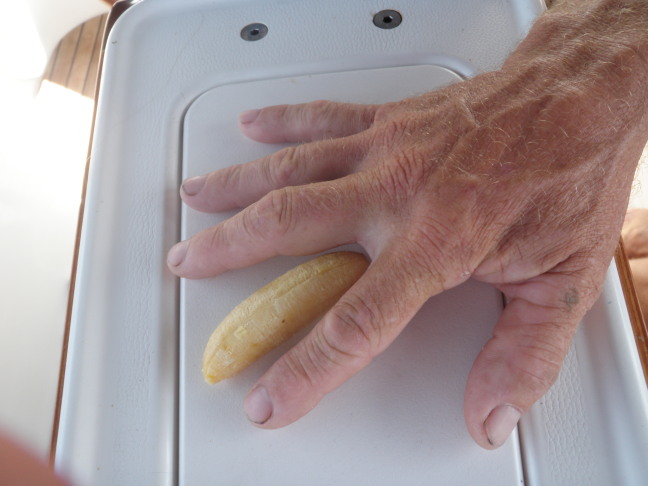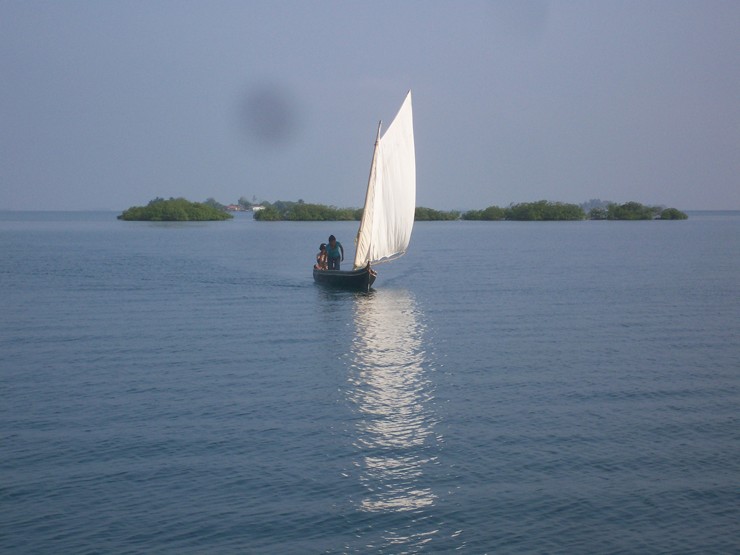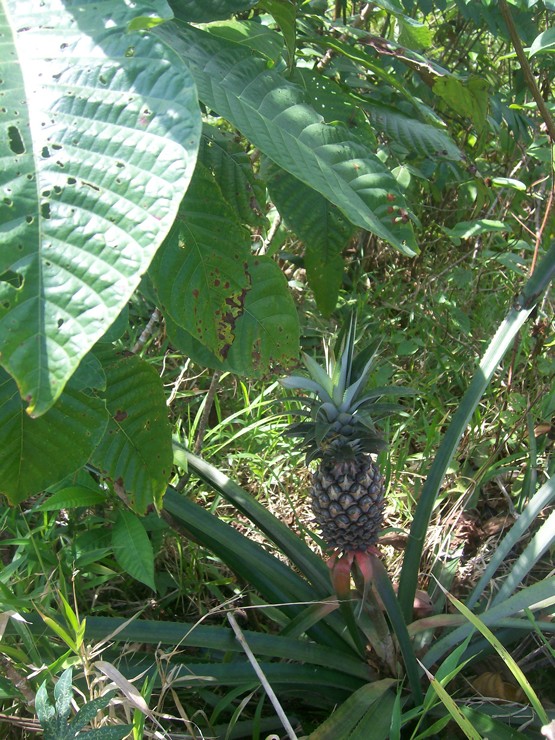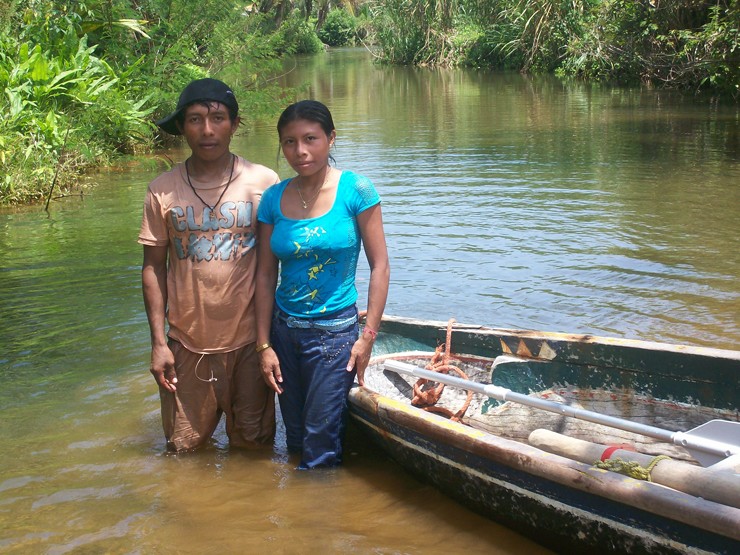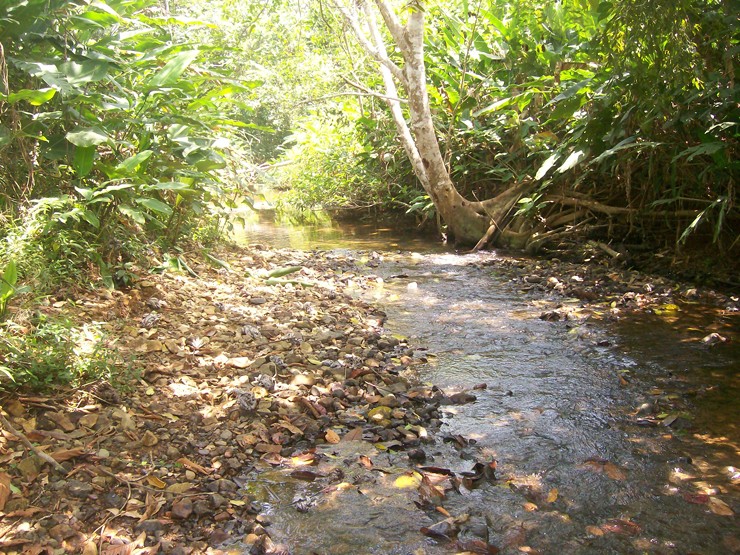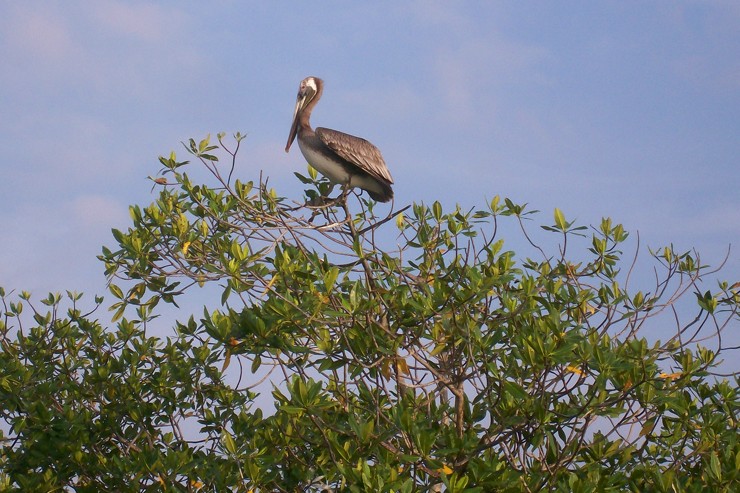San Blas N9 26 W78 51

|
Let the shipwrecks of others be your seamarks!
After a rather disappointing couple of days in the Rosarios, we sailed for the San Blas a little concerned that they would not live up to their reputation. Another rough sail in big lumpy seas did not help, it was an uncomfortable beam reach in a northerly force 6 but at least it was quick. Sailing overnight we reached our planned destination and anchored in East Hollandes Islands, the outermost reefs of the San Blas. Palm tree covered, beach fringed islands surrounded us and we started to relax, even though the wind was still blowing hard. At about 10 o'clock just about to go to bed, there came an ominous bang from the rudder. We had dragged in the windy conditions into a lump of reef that had been 200 yards behind us. The sand is mainly broken coral and as a result is rather light, although I had dived to check the anchor and it had appeared well buried, it had clearly not held us. In the pitch black and in a state of trepidation we started the engine and motored towards the lights of the other anchored yachts. Luckily the rudder came free with a bit of bumping and we were able to re-anchor, this time adding our 60lb CQR for safety and peace of mind.
Following this unhappy experience we were a bit reluctant to move at first, but having explored the islands and reefs that were accessible, we moved to another much more secluded. It was extremely quiet and very restful with a feeling that the rest of the world was far away. Then we met Venancio.
We were visited whilst at this new anchorage by a dugout canoe with Venancio Restrepo, master Mola maker selling his wares. He convinced us to buy some of his beautiful traditional tapestries, he came on board and we got talking to him as he spoke good English. It turned out he lived on an island known as Shirtmakers' Island or Mormake Tupu in Kuna. We decided we would visit this island to see how these industrious people live and we did not regret it despite having to do some intricate eyeball reef navigation to get there. Mormake Tupu (Kuna), Isla Maquina (Spanish), Shirtmakers' Island On our arrival off the island we were directed by waving first of all and then swimmers and canoes, to the best anchorage. We were then bombarded by Mola sales people in their rough canoes before we started to chat to a young Kuna who spoke good English. We asked if we could buy some bread and also asked to be introduced to the chief to pay our 5 dollars fee, each group of islands has its own territory and a fee is paid to anchor and cruise in their waters. We also needed the chief's permission to visit the local river that runs inland and is under the aegis of Mormake Tupu. The chief turned out to be asleep but eventually appeared, a bit bleary eyed, and provided us with the necessary paperwork . However, our young guide, Romilio, took us to his compound on the island where his extended family and his wife Jessica and baby daughter, Romina, lived. We bought a stalk of bananas from Romilio's father, like the Kuna their bananas are tiny but they are very delicious, tasting more like strawberries than bananas.
We immediately caused some laughter and confusion when we asked for a single loaf of bread...it turns out that Kuna bread consists of rather small rolls. Having broken the ice we chatted to our new friend and he then showed us his family sailing Ulu or canoe and offered to take us on a guided trip up the river.
We met as arranged the following morning and had a wonderful day with Romilio and Jessica, first sailing to the river on the mainland where the Kuna have their farms, and then paddling up to a communal landing place. From there we hiked up into the jungle, Romilio hacking with his machete, passing small areas of farmed land growing a mixture of yucca (like yams not the yucca we see in England), coconuts, pineapples, maize, sugar cane and various fruits. We finally arrived at his family plots and he duly cut us sugar cane to chew and dug us some yucca to take back. The Kuna do not keep animals as they do not want to destroy their forest, they work with the jungle not against it although they work hard keeping their plots viable. For meat they hunt wild turkey, they have their fishing and they catch lobster or cray fish. The Kuna are environmentally aware, they do not want their country ruined by deforestation and cattle farming. They love their wild animals, Romilio was proud to show us the monkey/squirrel like creatures he spotted, we have no idea what they were and he had only the Kuna names for them. We listened to uproarious howler monkeys and many different bird songs and calls. He pointed out butterflies and many wild fruits and flowers which are used to make medicines by the traditional medicine men and women. Strange and not so strange fruits.
On the way down we walked for a good way down the river bed, glad of the cool water after the sweaty walk up the hill, at some points I was chest high in water although it only came up to Chris's waist much to the amusement of Romilio and Jessica. Romilio loves the water and kept flopping full length as we made our way down. As a last taste of the jungle he shinned up a coconut tree on the river bank and cut 4 green nuts which he then proceeded to open with a machete so we could drink the delicious juice and then eat the soft flesh which he expertly skimmed out like a wobbly white bowl...wonderful. A paddle and sail back to Gryphon for lunch with our Kuna friends ended a perfect 5 hours and made us much more aware of how these people live and how well they have preserved their way of life.
Wet and soggy in the River Esadi These people are small, strong and tough. They leave home before dawn when it is cool to fish or paddle/sail their dugout canoes to their tribes river and then walk for about an hour through the jungle to the plateaus where the farm plots are. They have no machinery, the machete is their constant companion and they use it constantly, sharpening it on the river bed stones. They work until noon when they make their way back to their islands and spend the rest of the day with their families, the family is a large extended group of three generations. When married the men go to live in the compound of the wife's family. They have inter-island festivals where young Kuna meet, this often ends happily for some couples and it prevents interbreeding causing albinism which is seen in some of the islands.They have their own lands where they are autonomous and this right is protected by the Panamanian government. There are Kuna schools, clinics and places of worship on those islands that want them, on others they choose to have no formal education, health care or religious practice; the dress and traditions are strictly kept. The islands are divided into groups e.g. Hollandes, Coco Banderos, Islas Lemon, some groups are home to just one extended family, others are home to dozens but the Kuna believe in joint ownership, the only thing that seem to be privately owned on the islands are the coconut groves which are well tended. They have their own peacekeepers and each tribe or group They are a key part of the Panamanian economy as their needlework skills are famous. Their area the Kuna Yala, which is pristine rainforest land, attracts not only many yachts but cruise ships whose passengers buy up thousands of pounds worth of their tapestries. The outside is beginning to intrude. They have mobile phones! In contrast there is no mains electricity in the villages yet. (Romilio charges his phone up using a solar panel.) There is a television in the village run by generator. However, they are still almost self sufficient, earning a little money from selling their molas and their coconuts. Romilio wanted to stay in the village and did not want to travel but when we asked his wife if she ever wore the traditional clothes she said she didn't like them. Clearly the Kuna are changing but one can only hope that these gentle people will remain in harmony with their environment and not be changed by the outside world too much ...or indeed have their island villages swamped by sea level rise. Romilio and Jessica
Upper reaches of the River Esadi
As a finale we spent 2 nights in a totally secluded peaceful anchorage about a mile from the village and just off the mainland. We were watching the pelicans dive and even being visited by a pair of dolphin. We went swimming before fully reading about the anchorage in the pilot book, it was a cool treat then we read that the mangrove surrounding the anchorage is home to the large Caribbean crocodile, oops. A magical place and a wonderful experience.
They look ungainly but the pelicans here are most graceful on the wing.
|



